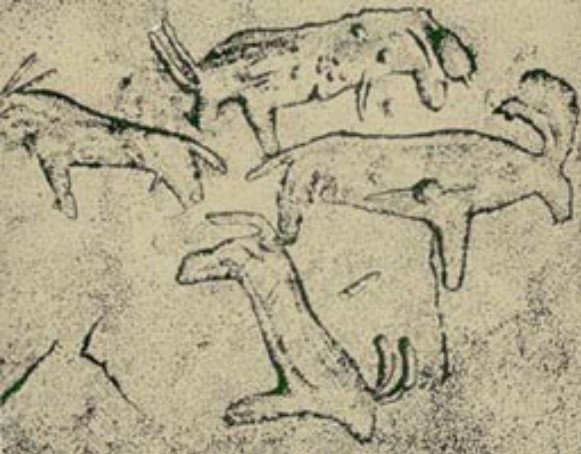Mesolithic Period
Mesolithic Period [Мезоліт or Середня кам’яна доба; Mezolit or Serednia kamiana doba]. A transitional period of the Stone Age, between the Paleolithic Period and the Neolithic Period (ca 8th–5th millennium BC), also known as the Epipaleolithic. The start of this historic period coincided with the beginning of the current geological age, the Holocene. During this time the earth experienced warmer temperatures and the glaciers covering large portions of the northern hemisphere retreated, leaving behind the basic geological and hydrological features of modern Ukraine.
Several significant social and technological advances took place during this period. Flint technology developed to the point where small, almost standardized, geometrically shaped pieces could be made. The basic tool and implement inventory of Upper Paleolithic man continued to be used, albeit with an increase in the manufacturing of bone and wood items. The introduction of the bow and arrow and the domestication of the dog led to changes in hunting practices, particularly the smaller size of hunting groups. Fishing expanded as an important sustenance activity, attempts at domesticating animals (pigs) for consumption were made, and there was even some rudimentary agricultural activity. Mesolithic sites have also revealed evidence of the earliest efforts to make pottery in Ukraine.
Three main settlement areas of this period have been identified: southern Ukraine (the steppe and Black Sea regions and Crimea), the forest-steppe (particularly the middle Dnipro River and Donets River basins), and northern Ukraine. Research has also shown that the Mesolithic population of Ukraine was more migratory than its Upper Paleolithic counterparts. One explanation for this is that there was a need to look further afield for game because of the demise of the mammoth, the thinning out of traditional hunting grounds, and an increase in population. Mesolithic peoples commonly constructed winter shelters of a permanent or semipermanent nature and made extensive use of temporary summer shelters. Some sites have shown evidence of rectangular semi-pit winter dwellings with post construction. Presumably the walls would have been made of clay and the structure covered with skins or with locally available vegetation. Caves were also commonly used as winter dwellings.
Studies at Mesolithic sites reveal that full body burials were common. They also supply evidence for other practices, such as tying the hands of the deceased at the time of burial (perhaps to keep their spirit from ‘wandering’ the earth) and the ritual severance of finger segments.
The artistic activity of Mesolithic peoples was not at all as developed as that of Upper Paleolithic peoples and was limited largely to schematic drawings on rocks and the making of personal adornments from animal and fish teeth.
Among the best known Mesolithic sites is Kamiana Mohyla near Terpinnia, Melitopol raion, Zaporizhia oblast. The earliest cultural-chronological schemes for the Mesolithic Period in Ukraine were proposed in the 1920s by Petro P. Yefymenko and Mykhailo Rudynsky. As research about this period continued, new schemes emerged. Despite considerable progress in this respect, a definite chronology will require more research.
BIBLIOGRAPHY
Arkheolohiia Ukraïns’koï RSR, vol 1 (Kyiv 1971)
Telegin, Dmitrii. Pamiatniki epokhi mezolita na territorii Ukrainskoi SSR (Kyiv 1985)
[This article originally appeared in the Encyclopedia of Ukraine, vol. 3 (1993).]

